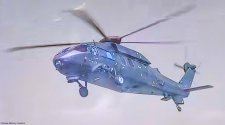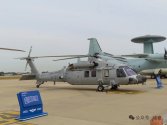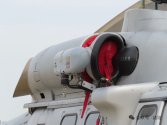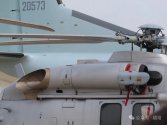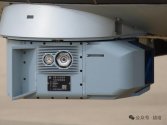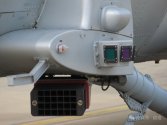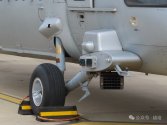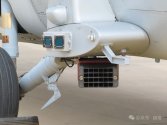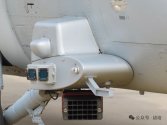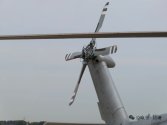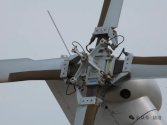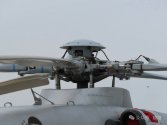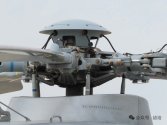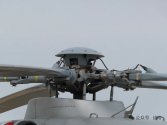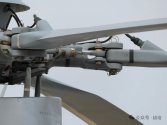Short of the actual invasion of the Japanese home islands, China doesn’t need to use helicopters for transport too much in most realistic combat scenarios.
There is literally zero realistic invasion scenarios against Mainland China by any adversary, so rapid reaction forces are not of paramount importance.
There is the possibility of AR of Taiwan. This requires significant OTH ship-to-shore capabilities.
There is also the possibility of border conflicts which will have it's own theatre requirements for rotary wing depending on the terrain.
Saying that there is zero chance of a fight on the mainland is the equivalent of western forces divesting Heavy MBTs because all current conflicts are asymmetric and yet, look at them now.
Doctrine and capability takes years or even decades to build up. You cannot afford to NOT plan for a fight on your borders until it happens. Not when you border >10 countries, half of which can potentially become belligerent over a very short period of time.
Sure there are plenty of alternative options to use to deal with cheap drone swarms, but in a near-peer war, logistics and attritional costs are of paramount importance. Do you really want to use a massive, expensive SAM to deal with a cheap drone when you can shoot them with a small cheap missile using a helicopter that doesn’t have pressing duties anyways? The opportunity cost differences between using fastjets and SAMs to deal with drones compared to Z20Ts will be massive.
Are SAM and helo's the only viable options? Really?
I hear the APKWS on fastjets is proving to be a decent solution, shouldn't be too hard to use on a slow trainer or Tucano analogue. Much lower overhead and much faster response time to boot.
Also drone v drone is quite a thing along with the development of HPMs and various vehicle and/or man-portable point defense? I recall a recently launched vehicle mounted anti-drone system using not missiles but small drones to intercept incoming. You don't need to cover the entire coast ... just put them on POIs and have them come to you.
Firstly, just what kind of NLOS loitering munitions can have reach to the mainland Chinese coast from what launch platform?
In any realistic war scenario, the U.S. and minions will get pushed out to the second island chain in the opening days or even hours of commencement of hostilities. That also extends to their ISR capabilities. What kind of thousand km+ ranged loitering munitions can the US deploy against China?
You postulated pushing helos to a FOB, which to me is pushing it towards the LOC. FORWARD Operating Base. Of course NLOS munitions will reach out and touch your FOB
If you saying that you wish to set up alternate airfields to spread helos along the China coastline to defend against potential Shaheed-analogue swarms, then there is no NLOS that can reach.
Secondly, you are vastly overestimating how complex and permanent FoBs need to be for rotorwing assets. You can literally set up in parking lots and empty fields within an hour, and also pack up and move out almost as quickly. The sheer number of possible sites is going to be impossible for the US to keep track of even in peacetime, never mind during wartime conditions. They can easily do randomised redeployments for every refuelling and re-arming stop, so even if you see some z20s getting refuelled and rearmed somewhere by good luck, you are almost certainly to never see them at that spot again. Indeed, the PLA would absolutely love it if you are stupid enough to waste your limited and rapidly diminishing recon and strike assets trying to play whack-a-mole chasing Z20 refuelling trucks around the Chinese countryside and coasts instead of targeting fixed high value military and industrial targets.
This is a hand-wavum simplification of a complex military op. That it can be completed in a few hours belies the amount of log tail required to converge onto a location to enable a FOB. Just think in terms of the amount of log tail that follows a overseas deployment of an airwing - maintenance and parts. Now add on to that POL and ammo requirements that is now not being provided by a friendly base. Then add in all the other ancillary ATC and perimeter security personnel.
This is like saying that a strike mission is just fuel, arm and takeoff, drop bombs and fly back. Notwithstanding that there is a massive amount of manhours prior and post mission that goes on unseen to enable the success of said mission.
Spotting a FOB is not limited to spotting the birds converged on the ground. Hours before the set up, when you assets (ground or air) start to converge to set up is already an indication to a competent opponent that it is an area of interest. Just think in terms of the AAR from Ukraine where shoot-and-scoot vehicles are most easily spotted while OTM.
One aspect of using Z20s for countering cheap drone spams is that you can push them where ground based defences cannot be deployed. IE, over water. Having Z20s refuelled on or near the coast means they can spend the lion share of their patrol and engagement time over water. So that’s an extra defensive layer above and beyond what land based AA can provide anyways.
Indeed, you do not need to limit the Z20Ts to just the coast. You can use the 056 fleet to support them as refuelling and rearming pads. You can also use LHAs, LHDs and even LPDs as mini helicopter carriers for such missions. If the PLA really wanted to, you can commender civilian cargo ships and use them as larger FoBs if they wanted to. But that carriers greater risk and frankly, the PLAN has so many existing assets it won’t be remotely necessary.
Having hundreds of Z20s engaging enemy spam drones up to hundreds of miles offshore means that the number of such drones that leak through and need to be dealt with by land based defences is going to be a tiny fraction of what they would have had to deal with. Solving both the spam and attritional issues such attacks are meant to cause.
Just because you have a mighty warhammer doesn’t mean it’s automatically the best tool for every task. And one of the great strengths of the PLA is that they are not overly proud but are extremely pragmatic. They will not turn their nose up at a perfectly good use case of something just because they have a more fancy way of dealing with that same problem.
I never said you can't use helos for drone defence. For that matter, I did postulate (can't remember if it was here or some other discussion) that the helo wing of a ARG can be used for near-defence against incoming drone swarms BUT I hope you realise that this is not a simple tasking that can be done on a whim. Your fleet has multiple layers of AD that will be at work as well. Putting helos in the air, between Fleet AD and incoming bogeys is prime environment for blue-on-blue. Putting 20+ helos to engage a swarm means also that they have to have very defined arc of fires, formation and flight parameters, which means training and lots of it on top of all other primary mission sets they need to train for.
Maybe time to bring back the YB-40















